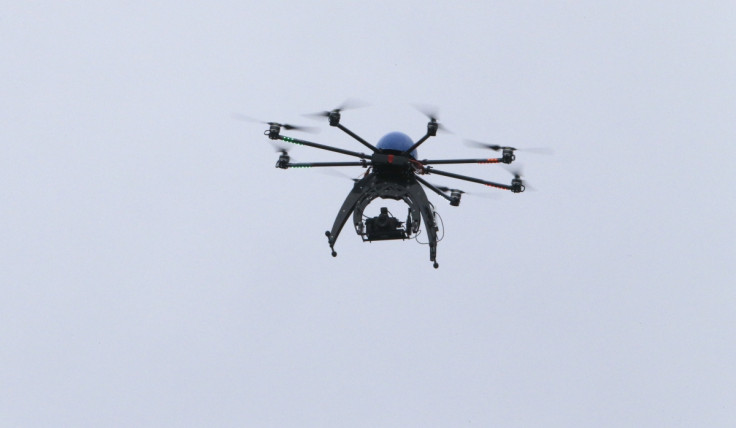Bomb-sniffing drones: US scientists develop UAV nuclear weapon detection sensors

US scientists have found a way to miniaturise the sensor technology used to help detect nuclear and chemical weapons so that it can be attached to a drone, which could potentially make it much easier to detect dangerous explosives.
Researchers and graduate students from the University of Wisconsin-Madison's Fusion Technology Lab have developed a system that can be attached to an unmanned aerial vehicle (UAV). A vehicle is driven out to the location of the hidden explosives laden with several drones.
One drone, known as the relay drone, hovers in the air. A device on the vehicle generates electricity and converts it into radio waves, which are beamed up to the relay drone. The relay drone then converts the radio waves back to electricity, and then back to radio waves again, before beaming them down to power a neutron drone.
The neutron drone, which is hovering close to the ground, irradiates the target area with neutrons, after which sensor drones begin searching for gamma rays or other particles that have the signature of specific chemical and explosive materials. If any evidence of this is found, the sensor drones send an alert back to mission control.
A cheaper and safer way to detect explosives
At the moment, similar sensors are used at security checkpoints in airports to scan luggage, and the same sensors are included in detectors used by UN weapons inspectors and military bomb disposal specialists to locate weapons of mass destruction and roadside bombs, but current solutions require closer contact with the hidden explosives, which is dangerous.
Of course, it is possible to use special tracked vehicles designed to roll right up to a suspicious package or bump in the road and attempt to detonate any possible explosives, but this is expensive. Using a system of drones would likely be cheaper and the UAVs can instantly establish whether the package is safe, rather than law enforcement having to take the precaution of safely exploding all potentially suspicious packages.
It could take about a year for the technology to come onto the market, but there are also concerns about how much radiation the drones use when scanning the target area. However, the researchers say that the radiation levels are minimal – the radiation that a person standing in the target area will absorb is approximately equivalent to the amount of radiation a traveller absorbs from spending 10 minutes in an aeroplane flying at 30,000ft.
#US is developing bomb sniffing drones, that could detect terrorists’ IEDs & active land mines pic.twitter.com/4znFgiQyoz
— Warfare Worldwide (@WarfareWW) April 24, 2016
Drones cannot yet detect explosives in the sea
The US military is very interested in the development of this bomb sniffing drone technology, and in fact the US Navy was hoping to be able to use the drones to detect mines located at the bottom of the sea, but unfortunately, this is not possible at the moment.
The hydrogen in water slows down the neutrons beamed into the target area by the neutron drone, which makes it impossible for the system to detect explosives unless a potential mine is located within 3ft of the water's surface.
"[The students] did something that has never been done before," Jerry Kulcinski, an emeritus professor of nuclear engineering and the lab's director told local Wisconsin newspaper The Journal Times.
"One of the ways to get around the drones is to bury (explosives) very deep, but if you bury them very deep they won't create the damage they'd create if they were a foot or so below the ground. So if you can get the bad guys to bury everything six feet down, then you're making some progress."
© Copyright IBTimes 2025. All rights reserved.






















